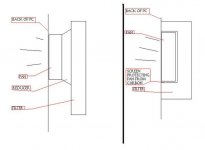Strangely
Member
ha ha glad you liked the icon! I just copied and pasted your icon to check the dimensions, so whilst I was there!
Matting, schmatting, it's just a carbon related word I remember reading! I'll look into 'granulated activated carbon' but I doubt any shops sell it, even the hydro stores push the off the shelf filters, not seen 'granulated activated carbon' on any of there websites.
Don't want to buy online for a) the obvious anti stealth reasons b) the numerous (you included I think, might have made that up!) stories of non-activated turning up.
Don't really want to buy seeds online either but I'll probably have to bite the bullet there!
Matting, schmatting, it's just a carbon related word I remember reading! I'll look into 'granulated activated carbon' but I doubt any shops sell it, even the hydro stores push the off the shelf filters, not seen 'granulated activated carbon' on any of there websites.
Don't want to buy online for a) the obvious anti stealth reasons b) the numerous (you included I think, might have made that up!) stories of non-activated turning up.
Don't really want to buy seeds online either but I'll probably have to bite the bullet there!

 Just messin'. Glad it helped, kod.
Just messin'. Glad it helped, kod.




 That is crazy! That way you'll only have 17.3 sq in of area! Versus the 37.8 sq in of the tubular filter, versus the 127.5 or so that you potentially have (those dimensions are for the back of the PC I'm typing on.)
That is crazy! That way you'll only have 17.3 sq in of area! Versus the 37.8 sq in of the tubular filter, versus the 127.5 or so that you potentially have (those dimensions are for the back of the PC I'm typing on.)

 but as soon as you start saying "I can afford to lose a bit here" or "I will just have to make do with this like it is" and making compromises, they will compound and cause bad reactions further along which may in turn create all new problems. Already we have an issue where you may have to remove lights and can't fit shit in, and this is before we've even become inefficient!
but as soon as you start saying "I can afford to lose a bit here" or "I will just have to make do with this like it is" and making compromises, they will compound and cause bad reactions further along which may in turn create all new problems. Already we have an issue where you may have to remove lights and can't fit shit in, and this is before we've even become inefficient!
